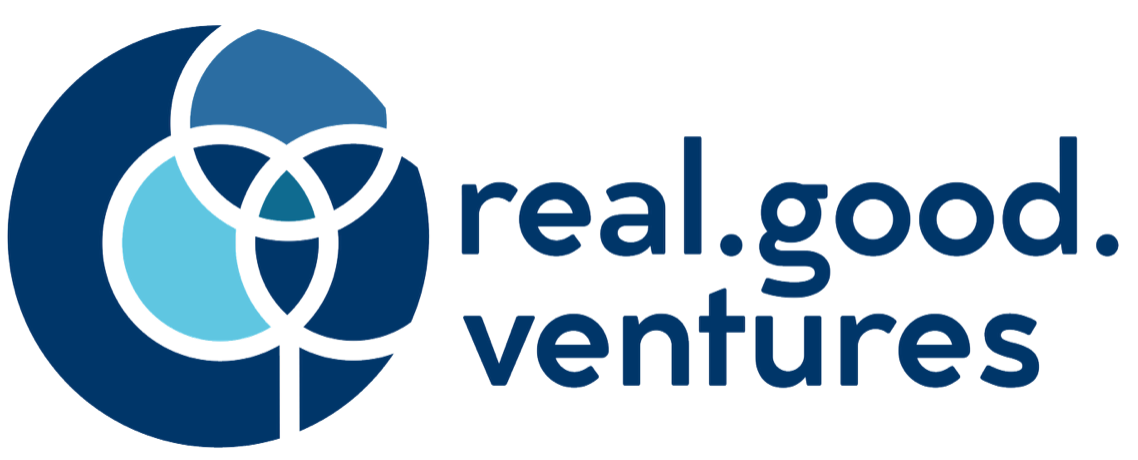Execution Courage
Our friends at McKinsey just published quite an interesting article on “Strategic courage in an age of volatility”.
This piece suggests that CxOs and business owners are adopting one of two attitudes in the face of the current uncertainty: either hunkering down and adopting a defensive posture or leaning into the volatility and “using it as a catalyst to galvanize action around new opportunities.”
Encouraging business leaders to take advantage of adverse conditions is not new. But this article stands out because McKinsey identified three “edges” to improve organizational performance in challenging times - and one of these edges is execution.
Execution is an edge in tough times
At Real Good Ventures, we work with our clients to improve their organizational health through execution excellence.
Since the pandemic, we’ve relentlessly helped our clients focus on their execution discipline: we know that execution is how you maintain focus on your value chain even when demand shifts and how you protect your profitability by avoiding the “execution tax” - the leakage from your bottom line that comes from lack of clarity across your organization as to which tasks and activities matter.
We love to see the critical importance of execution being recognized by a consulting firm that is famous for its focus on strategy. The three consultants who contributed to the article write, “the ability to execute well is always valuable, of course, but just as volatility drives up prices of stock options, it likewise raises the value of strategic options - the ability to rapidly pivot in response to changing conditions.”
They point out what our clients already know: good execution allows you to move faster. Why is that? Because a company that executes well is one where:
Goals are clear to everyone, from top to bottom. Objectives are constantly discussed and affirmed. There is solid strategic understanding from all employees and constant two-way communication about goals. If these goals need to change, the organization can quickly pivot accordingly.
The structure is entirely focused on the activities and tasks that matter the most; it is designed to minimize delays in communication and decision-making. This focus facilitates the adaptation to new objectives when necessary.
People are understood to be the most precious asset. Leaders are aware of their own leadership and skills, and they constantly seek to have the right people in the right roles. Any change in strategy causes natural friction, but that friction is minimized when leaders seek to reassign their employees to positions where they will be the most effective - and will be fulfilled and happy.
The one question to ask
McKinsey focuses on Fortune 500 companies and their approach to execution tends to be complex. Our own approach is much simpler - and we believe leaders do need simplicity right now.
The simple question we ask our new clients is: “Are your capabilities all aligned with your goals?” We also then ask a second question, which is: “How will you know?”
Execution is about alignment: is the organization entirely and exclusively aligned with its goals? Reducing the “execution tax” means reducing the distractions and noise that get in the way of focus, whether they are legitimate (“maybe we should serve this new segment”) or not (if they are not clear on the strategy, employees may inadvertently make decisions that undermine the company goals). Fewer distractions result in better alignment.
McKinsey does agree; good execution, they write, is when leaders have “institutionalized best practices that enable organizations to ‘get stuff done’”.
Good execution is about focus, and focus is about action - especially when we face so many challenges and the prudent course of action would seem to be hunkering down - and inaction.
Ask the experts
Who are the top experts in the tasks and activities that employees execute every day? Well, what about the employees themselves? To know exactly how much alignment there is in an organization, you should ask the people who execute. Their perception (of the company strategy and goals) becomes the reality of execution. They will act and make decisions not based on what the plan is but on what they think the plan is.
Therefore, we use the Line-of-Sight to evaluate an organization’s health: the platform polls employees up and down the organization on the main execution success factors:
Leadership strength
Strategic clarity
Metrics
Organization and structure
Optimal use of human capital
This creates the fact base needed for any leader to identify and close any execution gaps. An additional benefit of this approach is that it signals to employees that their opinion matters and that they are integral to execution - which is to say, to the success of their organization. These days, it really helps to make employees feel good about themselves and their role in something bigger and meaningful.
Where to start
At Real Good Ventures, we provide every organization with simple, confidence-inspiring analytics and solutions that build their internal alignment - and get things across the finish line.
If you want to demonstrate “execution courage,” if you are curious about your own execution capabilities, and if you wonder if you could do more to seize new business opportunities in the current climate, just give us a call.
We’ll help you get the facts you need to assess the true health of your company and align all its parts into one effective, fast, focused whole. With that, you’ll have the confidence to make courageous decisions and take control in the current uncertain climate.
